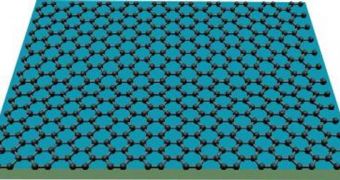One of the problems that could constitute an issue in the wide-scale use of graphene sheets in the new generation of circuits and electronic devices concerns ripples, which are similar to the ones exhibited by a plastic wrap tightly pulled over a clamped edge. And the need to use the carbon compound will be very compelling in the future, when taking into account its amazing physical and chemical properties, its atom-thick structure, its planar geometry, its high current-carrying capacity and thermal conductivity.
The ripples that occur in its structure have the ability to drastically alter its properties, and the problem is that not all of these modifications are good. That is to say, it would be a lot better for researchers if they could trigger the ripples themselves, in a controlled manner that would ensure only the desired modifications are caused. This would ensure a higher level of sophistication for future nanoscale devices and electronics, scientists believe.
As such, researchers from the University of California in Riverside (UCR) report in the July 26th issue of the journal Nature Nanotechnology that they managed to observe the first successful and controlled man-made ripple in graphene, stretching one or two dimensions. Expert Chun Ning (Jeanie) Lau explains that simple thermal manipulation was used for the job, and that the method allowed the team to control the orientation, wavelength and amplitude of the ripples.
“When the graphene sheets are stretched across a pair of parallel trenches, they spontaneously form nearly periodic ripples. When these sheets are heated up, they actually contract, so the ripples disappear. When they are cooled down to room temperature, the ripples re-appear, with ridges at right angle to the edges of the trenches. This phenomenon is similar to what happens to a piece of thin plastic wrap that covers a container and heated in a microwave oven,” the scientist says.
“Graphene's ability to conduct electricity is expected to vary with the local shape of the membrane. For instance, the ripples may produce effective magnetic fields that can be used to steer and manipulate electrons in a nanoscale device without an external magnet,” Lau, who is a UCR associate professor of physics and also a member of the University's Center for Nanoscale Science and Engineering, adds.

 14 DAY TRIAL //
14 DAY TRIAL //